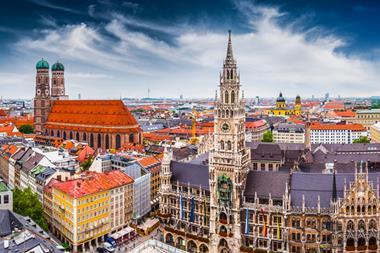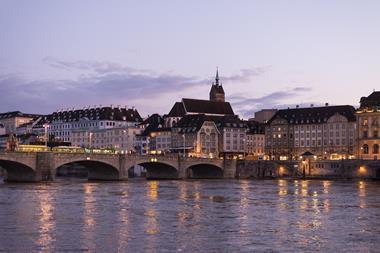For many foreign real estate investors, one glance at historical price movement statistics in Hong Kong is about all the research they need to confirm that it is just too volatile a market to be exposed to.
Swings of +/-60% in 12 months for office stock and +30% in a quarter for luxury residential are just too erratic. But Hong Kong is a market of extraordinary opportunity if a minor modification to real estate’s oldest adage can be employed.
Instead of ‘Location, Location, Location’, a more effective strategy is ‘Location, Sentiment, Timing’. The first principle still applies in Hong Kong just as it does everywhere else. Owning a quality property that is unique amongst its peers or in limited supply is always a great investment starting point. But understanding how Hong Kong’s market cycle can move and the factors that influence it can be the difference between an exceptional return and a spectacular loss.
Hong Kong is emerging from a seven year deflationary cycle over which time it has had to endure a number of external shocks: the Asian currency crisis in 1997-98, the tech bubble bursting in 2000, 9/11 and its impact on tourism, and more recently the Sars epidemic. In a market where sentiment plays such an enormous role these individual events have caused a continuing crisis of confidence in the local market.
However, in late 2003 the first hint of change became evident initially in the residential market where whole phases of developments sold out over a weekend. This emphasised the liquid nature of the Hong Kong market and the large amounts of cash sitting on the sidelines waiting for a signal to return to the market. This ‘cash pile’ was evidenced in the last few days with the (now delayed) HK Link REIT being 54 times over-subscribed, an even more amazing fact when you consider it is the worlds largest REIT IPO.
During the last 12 months the ‘China Factor’ is being recognised and the closer economic partnership agreement (CEPA) with China is just one of the steps taken by the mainland to assist Hong Kong’s role in its growth, in
particular in the pearl delta region on
Hong Kong’s doorstep.
The areas now experiencing growth from the ‘China Factor’ are tourism where three star and lower category hotels have experienced sustained high occupancy of 90%+, and the retail sector where the districts of Causeway Bay, TST and Mongkok have staged dramatic recoveries with retail spending from in bound China travel, almost single handedly creating the retail sales growth.
In the Luxury residential sector MGPA has capitalised on the weak market over the last three years. In 2002 we acquired a luxury residential development on Hong Kong Island formally known as ‘Royal Cliff’. This project was poorly maintained and did not adequately capture the unique nature of the site. The property was acquired at HK$8500 (e822) /ft2, well below replacement cost, knowing that the price represented a twofold benefit: firstly it was at a cyclical low and, secondly, the property was not maximising the unique attributes of the site, both of which were opportunities to create value.
Over the intervening period the project was rebranded ‘56 Repulse Bay Rd’ and modernised with a new façade and a refocusing of the property’s outlook to the water’s edge,.
In September the project was completed after spending HK$900/ft2 and now its value is around HK$20,000/ft2 - more then a 110% increase in value over 30 months. There are not many places in the world where people will pay up to $20m for a single apartment but when Hong Kong has sentiment and cycle running in harmony this and much more can happen.
In the office sector the prime buildings in Central and Admiralty, the main central business district locations on Hong Kong Island, rarely trade and are tightly held by the large listed Hong Kong property companies. The main area for investor participation is in the strata title floors in five buildings in these districts, this is the most liquid form of stock in the office sector
In the period from 1992-94 prices rose from HK$5000/ft2 to HK$24000/ft2, and in 1994 crashed to HK$9000/ft2 rising again between 1995 and 1997 from HK$9000/ft2 to HK$17000/ft2. Handsome profits were made by those who sold in those up cycles and significant losses incurred in the down troughs. The market again crashed in 1997 after the Asian currency crisis and floors that sold for HK$17000/ft2 were valued at HK$4000/ft2.
These are the extreme movements you have to deal with if you participate in the Hong Kong market. When the market runs it can move prices far in excess of the underlying fundamentals, but when it turns it can crash literally overnight, and there are few chances to create a ‘market floor’ in any artificial sense, as is often seen in other markets via capitalised high face rents to hold values but offset by incentives. In Hong Kong you have to manage the realities of a true ‘open market’ pricing system.
The office market has staged a dramatic recovery in 2004 with capital values increasing by 50% in the first nine months from HK$6000/ft2 to HK$9000/ft2. Our house view is that we are in for a period of strong recovery in the office market over the next two to three years and investors will have to monitor closely external factors that may give rise to changes in the sentiment of local investors. Those that understand this true market economy will again see rich pickings, but if you don’t have a local presence and take a passive investment strategy be prepared for a volatile investment environment and potential big gains and losses from your investments.
After seven long years of pain Hong Kong is again enjoying its time in the sun. We think the sun is going to shine for a while on this uniquely positioned economy, as Hong Kong finally gets to play its real role in the China story that is captivating the world.
James Quille is chief executive officer of Macquarie Global Property Advisors













No comments yet